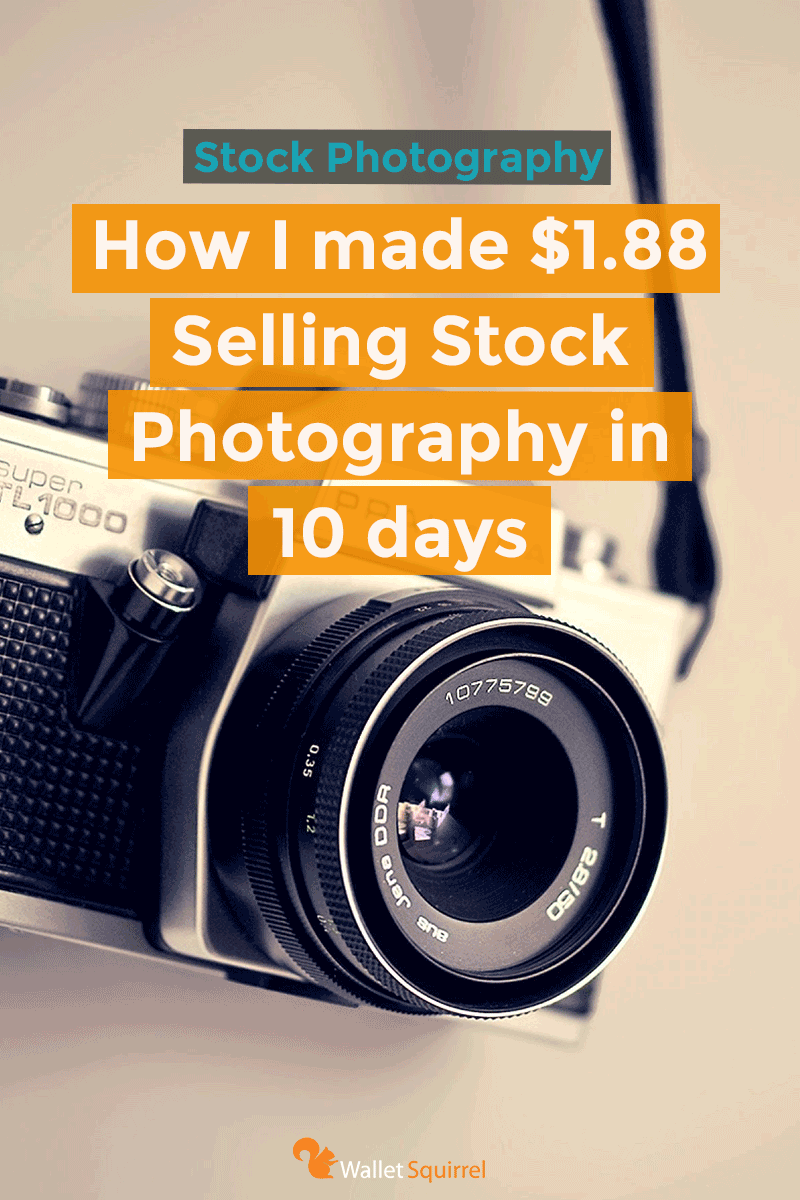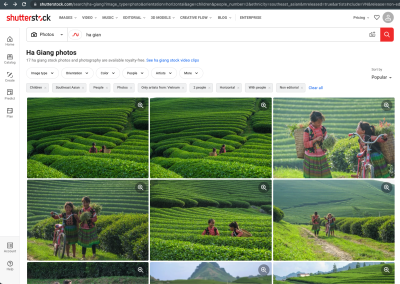Thinking about turning your photography hobby into a source of income? Shutterstock is one of the biggest platforms out there for photographers to sell their images to a global audience. It’s a great way to monetize your passion, reach potential clients, and earn passive income over time. But before diving in, it’s helpful to understand how the platform works, what’s needed to succeed, and how to make your photos stand out. In this post, we’ll explore some effective strategies to help you sell more Shutterstock photos and maximize your profits. Let’s get started!
Understanding Shutterstock’s Contributor Requirements

If you’re considering contributing your photos to Shutterstock, it’s essential to familiarize yourself with their guidelines and requirements. This ensures your images are accepted smoothly and set you up for success. Shutterstock has specific standards to maintain quality and consistency across their platform, so here’s what you need to know:
- Image Quality: All photos must be high-resolution, sharp, and well-exposed. Blurry, pixelated, or poorly lit images are likely to be rejected. Shutterstock recommends a minimum of 4 megapixels for images, but higher-resolution photos tend to perform better.
- Technical Specifications: JPEG format with RGB color mode is standard. Files should not exceed 50 MB, and images should be properly color-corrected and free of noise or artifacts.
- Content Guidelines: Your photos should be original, not infringing on copyrights, and free of watermarks or logos. If your image features recognizable people or private property, model or property releases are required—more on that later.
- Model and Property Releases: If your photo includes identifiable individuals or private property, you must provide signed releases. Without these, Shutterstock might reject or restrict your images from being sold for commercial use.
- Content Restrictions: Shutterstock avoids images that promote illegal activities, violence, or contain explicit content. Keep your content professional and suitable for a broad audience.
Getting familiar with these requirements not only helps your submissions get approved faster but also ensures your portfolio maintains a high standard, attracting more buyers. Remember, the better your images adhere to Shutterstock’s guidelines, the more likely they are to be downloaded and generate income. So take some time to review their detailed contributor guidelines on their website—it’s worth the effort to set yourself up for success!
Preparing High-Quality Photos for Submission

Before you even think about uploading your photos to Shutterstock, it’s crucial to ensure they’re top-notch. Think of your images as your digital storefront — the better they look, the more likely someone will want to buy them. High-quality photos not only attract more buyers but also help you stand out in a crowded marketplace.
Here are some key tips to prepare your photos for submission:
- Use a good camera: You don’t need the fanciest gear, but a decent DSLR or mirrorless camera can make a big difference. Pay attention to resolution and clarity.
- Focus on sharpness: Blurry images rarely sell. Make sure your main subject is in sharp focus with clear details.
- Proper lighting: Natural light is often best, especially during the golden hour (shortly after sunrise or before sunset). Avoid harsh shadows and overexposed areas.
- Mind the composition: Follow the rule of thirds, keep clutter out of the frame, and make sure the main subject is balanced within the shot.
- Pay attention to resolution and size: Shutterstock recommends images be at least 4 megapixels, but higher resolutions (like 16 MP or more) are better for versatility.
- Post-processing: Use editing tools to enhance colors, correct exposure, and remove any distracting elements. But avoid over-editing — authenticity sells.
- File format and quality: Save your images in JPEG format with high quality settings. Make sure they are not overly compressed, which can cause pixelation.
Taking the time to prepare your photos properly pays off. Buyers are more likely to purchase images that look professional and polished. Remember, your photos are a reflection of your skills and attention to detail — so invest the effort to make them shine!
Optimizing Your Photos with Keywords and Descriptions
Once your stunning photos are ready for upload, the next step is making sure they get discovered. That’s where keywords and descriptions come into play. Think of them as the map that guides potential buyers directly to your images. Proper optimization can dramatically increase your visibility and sales.
Here’s how to effectively use keywords and descriptions:
Writing Effective Descriptions
- Be clear and concise: Describe what’s in the photo in a straightforward way. Mention the main subject, setting, and mood.
- Use relevant details: Include information about colors, emotions, and context. For example, “a happy family picnic in a sunny park.”
- Avoid keyword stuffing: Use natural language. Overloading your description with keywords can make it look spammy and hurt your ranking.
Choosing the Right Keywords
- Be specific: Instead of generic tags like “nature,” try “mountain lake at sunrise” or “autumn leaves in Central Park.”
- Use synonyms and related terms: This broadens your reach. For example, “car” and “automobile.”
- Think like a buyer: What words would someone search for if they wanted your photo? Use those keywords.
- Utilize all keyword slots: Shutterstock allows up to 50 keywords, so fill them thoughtfully and strategically.
Best Practices for Optimization
| Tip | Why It Matters |
|---|---|
| Use accurate keywords | Ensures your image appears in relevant searches |
| Keep descriptions natural | Makes your listing more appealing and trustworthy |
| Update keywords periodically | Helps your images stay relevant as trends evolve |
Remember, optimization isn’t a one-time task. Regularly review and refine your keywords and descriptions to improve your images’ visibility. The better you get at describing and tagging your photos, the more likely they are to be seen and purchased. It’s a simple but powerful way to maximize your profits on Shutterstock!
Best Practices for Pricing Your Shutterstock Photos
Figuring out how to price your Shutterstock photos can feel a bit like walking a tightrope. You want to make sure you’re earning enough for your work, but you also need to stay competitive so buyers will actually choose your images. So, what are some smart strategies to price your photos effectively?
First off, do your research. Look at what similar photos are selling for on Shutterstock. Notice the price range for images with similar themes, quality, and complexity. This gives you a ballpark figure to start with and helps you understand what buyers are willing to pay.
Next, consider the uniqueness and quality of your images. If your photo offers something special—like a rare perspective, professional editing, or a trending topic—you might be able to set a slightly higher price. Conversely, if your shot is more generic, pricing it lower can help attract more buyers.
It’s also important to think about the licensing options. Shutterstock offers various licensing types—Standard and Extended. Usually, Standard licenses are priced lower, but they’re suitable for most uses. If you have a high-value image that might be used in more extensive ways, consider offering Extended licenses at higher prices.
Another tip is to stay flexible. Don’t be afraid to experiment with your pricing. If a particular image isn’t selling, try lowering the price temporarily to boost sales. Conversely, if an image is in high demand, you might raise the price slightly to maximize profits.
Lastly, consider offering discounts or bundles for multiple downloads. This can encourage buyers to purchase more images at once, increasing your overall earnings. Just make sure that even with discounts, your pricing remains sustainable for you.
Remember, pricing is not a one-and-done deal. Regularly review your sales data and adjust your prices accordingly. Over time, you’ll get a better sense of what works best for your portfolio and your income goals.
Promoting Your Shutterstock Portfolio to Increase Sales
Once you’ve uploaded some stellar photos and set your prices, the next big step is getting those images in front of the right audience. Promoting your Shutterstock portfolio might sound daunting, but with some friendly, consistent effort, you can significantly boost your sales.
Start with social media. Platforms like Instagram, Twitter, and LinkedIn are great for showcasing your work. Share your best images, talk about the stories behind them, and include a link to your Shutterstock portfolio. Use relevant hashtags to reach more people interested in photography and stock images.
Building a personal website or blog can also be a powerful way to promote your work. Embed your best photos, share tips on photography, and include a clear call-to-action that guides visitors to view or purchase your Shutterstock images.
Networking with other photographers and content creators can lead to collaborations, referrals, and increased exposure. Join online communities, forums, or local meetups where you can share your work, learn from others, and get feedback. Sometimes, word of mouth is the best way to attract new buyers.
Don’t forget about SEO! Optimize your profile and image descriptions with relevant keywords. When people search for specific types of images, your optimized descriptions can help your photos appear higher in search results both on Shutterstock and search engines like Google.
Additionally, consider creating themed collections or portfolios around popular topics—such as business, health, or travel—that are trending or evergreen. Highlight these collections on your social media and website to attract niche audiences.
Finally, stay consistent. Regularly upload new images, update your portfolio, and engage with your audience. Over time, this steady effort builds recognition and trust, which can translate into more sales and higher profits.
Remember, promoting your Shutterstock portfolio is an ongoing process. The more you share, engage, and optimize, the more your work will stand out—and the more sales you’ll generate!
Monitoring Performance and Analyzing Sales Data
Once you’ve uploaded a collection of photos to Shutterstock, the real magic begins — but it’s not just about waiting for sales to roll in. Staying proactive by monitoring your performance and diving into your sales data can make a huge difference in boosting your income. Think of it as keeping an eye on your business’s health so you can make informed decisions that lead to better results.
Shutterstock provides a handy dashboard where you can track key metrics such as:
- Number of downloads
- Revenue generated
- Top-performing images
- Geographic locations of buyers
By regularly reviewing this data, you can identify which types of images are most popular. For example, maybe your cityscape photos are in high demand, but your abstract art isn’t getting much attention. Armed with this knowledge, you can focus your future shoots on what sells best, saving you time and effort.
Another helpful tip is to look for seasonal trends. Certain subjects may spike around holidays or events — think fireworks around July 4th or cozy winter scenes in December. Recognizing these patterns allows you to plan your shoots ahead of time, ensuring your portfolio stays relevant and in demand.
Don’t forget to experiment with different styles and themes based on your sales insights. If you notice a surge in demand for lifestyle photos, consider capturing more candid moments or everyday scenarios. If you see that certain keywords are driving more traffic, optimize your image titles and descriptions to match those search terms.
Some photographers also use external tools like spreadsheets or analytics software to dig deeper into their sales data. Keeping detailed records helps you track your progress over time, set goals, and identify areas for growth. Remember, the goal isn’t just to sell more images but to understand your audience and tailor your portfolio accordingly.
In short, monitoring your Shutterstock performance is an ongoing process. The more you analyze, the better you can adapt your strategy, improve your content, and ultimately maximize your profits. Stay curious, stay flexible, and let your data guide your creative journey!
Tips for Growing Your Photography Business on Shutterstock
Growing your photography business on Shutterstock isn’t just about uploading pretty pictures; it’s about building a sustainable, profitable brand. With a strategic approach, you can attract more buyers, increase your sales, and turn your passion into a thriving side hustle or even a full-time gig. Here are some practical tips to help you grow your presence on Shutterstock:
1. Consistency is Key
Regular uploads keep your portfolio fresh and increase your chances of being discovered. Aim to upload new images consistently — whether it’s weekly or bi-weekly. This not only improves your visibility in search results but also shows Shutterstock’s algorithms that you’re an active contributor.
2. Diversify Your Portfolio
Don’t put all your eggs in one basket. Explore different niches, themes, and styles to appeal to a broader audience. For instance, if you typically shoot landscapes, try adding some macro, lifestyle, or business-themed images. The more diverse your portfolio, the more potential buyers you can attract.
3. Optimize Your Keywords and Titles
Think of keywords as the bridge between your images and the people searching for them. Use specific, relevant keywords that accurately describe your photos. Avoid generic tags and focus on what makes your image unique. Well-optimized titles and descriptions boost your images’ visibility in search results.
4. Engage with the Shutterstock Community
Participate in forums, comment on other photographers’ work, and share tips. Building relationships within the community can lead to valuable feedback, collaborations, and exposure. Plus, engaging actively shows Shutterstock that you’re committed, which can have a positive impact on your profile’s visibility.
5. Keep Up with Trends
Stay informed about current design and visual trends. Check out trending topics on social media, design blogs, or stock image reports. Incorporate these trends into your shoots to ensure your content remains relevant and in demand.
6. Invest in Quality Equipment and Post-Processing
High-quality images attract more buyers and can command higher prices. Use good lighting, proper composition, and sharp focus. Also, spend time editing your photos to enhance their appeal without overdoing it. Clean, professional-looking images stand out and increase your chances of sales.
7. Promote Your Work Outside Shutterstock
Don’t rely solely on Shutterstock traffic. Share your images on social media, personal websites, or blogs to reach a wider audience. Cross-promoting your work can lead to new opportunities, commissions, or even direct clients.
Growing your Shutterstock photography business takes patience, persistence, and a dash of creativity. Keep learning, stay consistent, and always look for ways to improve. Over time, these small steps add up to a thriving, profitable photography venture that you can be proud of!
Common Mistakes to Avoid When Selling Photos on Shutterstock
Jumping into the world of stock photography can be exciting, but it’s easy to make some common mistakes that can hinder your success. Being aware of these pitfalls helps you improve your chances of earning more and building a solid portfolio on Shutterstock.
One of the biggest mistakes is not understanding Shutterstock’s content requirements. Each platform has specific guidelines about image quality, model releases, property releases, and content restrictions. Failing to adhere to these can lead to rejected submissions or even account suspensions. Take the time to read Shutterstock’s contributor guidelines thoroughly before uploading.
Another common error is submitting images that are too generic or overused. Photos of sunsets, coffee mugs, or laptops are popular, but they’re also saturated. Instead, focus on capturing unique perspectives or niche subjects that haven’t been overdone. This can help your images stand out and attract buyers looking for fresh content.
Neglecting keywording is a mistake that can seriously limit your photos’ visibility. Think of keywords as the search terms that help buyers find your images. Use relevant, specific keywords and avoid stuffing irrelevant ones. Be descriptive and consider synonyms, locations, and concepts to improve discoverability.
Quality matters—always upload high-resolution, well-composed images. Blurry, poorly lit, or highly compressed photos won’t sell, and they can hurt your reputation as a contributor. Invest in good equipment and editing software to ensure your images look professional.
Lastly, don’t forget to diversify your portfolio. Relying on a small number of popular subjects can be risky. Broaden your scope by exploring various themes, styles, and subjects to attract a wider audience and increase your chances of making sales.
By avoiding these common mistakes—understanding requirements, focusing on unique content, optimizing keywords, maintaining high quality, and diversifying—you set yourself up for greater success on Shutterstock. Remember, patience and continuous learning are key in the competitive world of stock photography!
Conclusion: Maximizing Your Earnings from Shutterstock Photos
So, you’ve learned about creating quality images, optimizing your keywords, and avoiding common pitfalls. Now, let’s talk about how to really maximize your earnings and turn your passion for photography into a steady income stream.
First and foremost, consistency is key. Regularly uploading new images keeps your portfolio fresh and increases your chances of being discovered by buyers. Consider setting a schedule—whether it’s weekly or biweekly—to add new content. The more high-quality images you have, the higher the chances of making sales.
Next, pay attention to current trends and seasonal demands. For example, during holidays or specific events, stock photos related to those themes tend to sell more. Keep an eye on popular categories and create images that cater to those needs. This proactive approach can give you an edge over other contributors.
Take advantage of keyword optimization—think of it as your secret weapon. Use a mix of broad and specific keywords, include relevant tags, and update them if your images aren’t performing well. Properly optimized images are more likely to appear in search results, driving more traffic and sales.
Additionally, consider expanding your reach beyond Shutterstock. Many contributors find success by submitting their images to multiple stock platforms like Adobe Stock, iStock, or Alamy. This diversification spreads your risk and opens up new earning opportunities.
Engaging with the community can also boost your success. Participate in forums, read blogs, and stay updated on industry trends. Learning from others’ experiences and sharing your own insights can help refine your strategy and keep you motivated.
Finally, track your performance. Use Shutterstock’s contributor tools to analyze which images sell best and why. Focus your efforts on creating more of those types of images, and refine your approach based on what’s working.
Remember, earning from Shutterstock isn’t just about one great shot—it’s about building a consistent, strategic approach. With patience, persistence, and a willingness to adapt, you can maximize your earnings and enjoy a rewarding journey in stock photography. Happy shooting!


